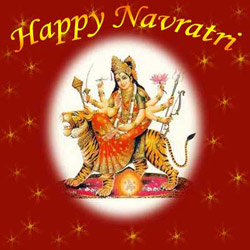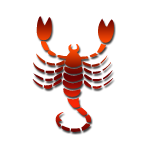Paid Services
ABCD of Navratri 2016

What is Navratra?
There are four junctures in a year during the movement of earth around Sun. Two main Navratras fall during the junctures taking place around the months of March and September- October. There is a high possibility of the contagious disease caused by harmful germs in this time. The numbers of diseases increase when changes in the climate occur during these junctures. So the process of staying healthy, keeping body clean and the mind in order is named Navratra.
Navratri: Nine Nights or Nine Days
From the night of new moon (Amavasya) to the eighth day (ashtami) or from the first day of the fortnight (padva) to the navmi) afternoon, fasting with other rules and rituals go on for nine nights that justify the name of the festival “Navratra”. Nights are counted here usually, that’s why it is called Navratra.
Why Nine Only?
Why to observe fast during Navratri?
We routinely perform purgation, cleansing or purification etc to keep the body healthy, but sometimes it becomes necessary to overhaul all the body parts. After every six months, fasting should be performed for this reason. Pure or Sattvik food and fasting make the body pure, immaculate body makes the mind sublimate that, in turn, sprouts good ideas, good thoughts foster good deeds, and these good deeds ultimately transform themselves into virtuous character that makes the heart pure and honest. The power of God resides only in pure mind.What is Navdurga?
These nine days, starting from the first day to the ninth day of the bright half (Shukla Paksha) of the Hindu months of Chaitra and Ashwin, have a ruling deity for each day depicting nine different forms of Goddess Durga or vital energy inhabiting in the metaphorical fort with nine doors signifying the human body. The nine forms of Goddess Durga are known as Shailputri, Brahmcharini, Chandraghanta, Kushmanda, Skandmata, Katyaini, Kaalratri, Mahagauri, and Siddhatri. They are also related with nine herbs or with nine things associated with fasts, which are used in Navratra - Kuttu (Shailaan), milk-curd, chaulai (chandraghanta), petha (kushmanda), shyamak chawal (skandmata), green vegetable (katyaini), black pepper and tulsi (kaalratri), sabudana (mahagauri), amla (siddhiratri). These are nine natural eatables used while fasting, which are found in jungles.
When the fast cannot be observed
Fast means resolution, pledge or vow. If one cannot keep the fast because of one’s hectic routine or of his body conditions, one can observe the fast for 9, 7, 5, 3 or just for a single day as per one’s own accord. If it is not possible to keep the fast for even one day, then at least try to avoid misuse of body doorways or senses. For example, restrict your tongue and do not overeat, do not listen bad things, do not backbite or complain, keep righteous vision, eat food, sleep and bath on time, do not force yourself to restrict call of the nature, and abstain from flirting, romance and sexual relations during this time. Or at least leave two habits during these days. To finish the fasting, Ashtami or Navmi is decided according to the family tradition. According to “Bhavishyottara Purana” and “Devi Bhagwat”, a family which has sons or who want a baby boy should finish their fasts on Navmi. The importance of Ashtami, Navami and Chaudas, which comes after four days of Dussehra have been described in Durga Saptashati too.
When one is not able to feed kanya during Navratri
It is considered pious to offer food or gifts to girls by increasing a girl every day or, if possible, offer food to nine girls and a boy daily during Navratra. To feed nine kanyas (little girls) on Ashtami or Navmi once is believed to be of medium kind of ritual. Those people who live alone or because of busy schedule can’t feed girls according to the custom, they can offer readymade food items as well as things like: comb, hair band, cream, oil, mirror, copy, pencil, toys, utencils, cloths, toffies, sweets, fruits, flowers and money and any other useful thing to little girls.
What to do for special votive?
- 2025 Horoscope
- 2025 राशिफल
- 2025 Chinese Horoscope
- 2025 चीनी राशिफल
- 2025 Muhurat
- 2025 मुहूर्त
- 2025 राशि भविष्य
- 2025 முகூர்த்தம்
- 2025 মুহূর্ত
- 2025 ముహూర్తం
- 2025 મુર્હત
- 2025 മുഹൂർത്തം
- 2025 ಮುಹೂರ್ತ
- 2025 মুহুৰ্ত
- 2025 ମୁହୂର୍ତ - ତିଥି ଓ ସମୟ
- 2025 ਮਹੂਰਤ
- 2025 ରାଶିଫଳ
- 2025 ਰਾਸ਼ੀਫਲ
- 2025 ರಾಶಿಭವಿಷ್ಯ
- 2025 രാശിഫലം
- 2025 રાશિફળ
- 2025 রাশিফল
- 2025 ராசி பலன்
- 2025 రాశిఫలాలు
 Best quality gemstones with assurance of AstroCAMP.com More
Best quality gemstones with assurance of AstroCAMP.com More
 Take advantage of Yantra with assurance of AstroCAMP.com More
Take advantage of Yantra with assurance of AstroCAMP.com More
 Yantra to pacify planets and have a happy life .. get from AstroCAMP.com More
Yantra to pacify planets and have a happy life .. get from AstroCAMP.com More
 Best quality Rudraksh with assurance of AstroCAMP.com More
Best quality Rudraksh with assurance of AstroCAMP.com More
Get your personalised horoscope based on your sign.



















